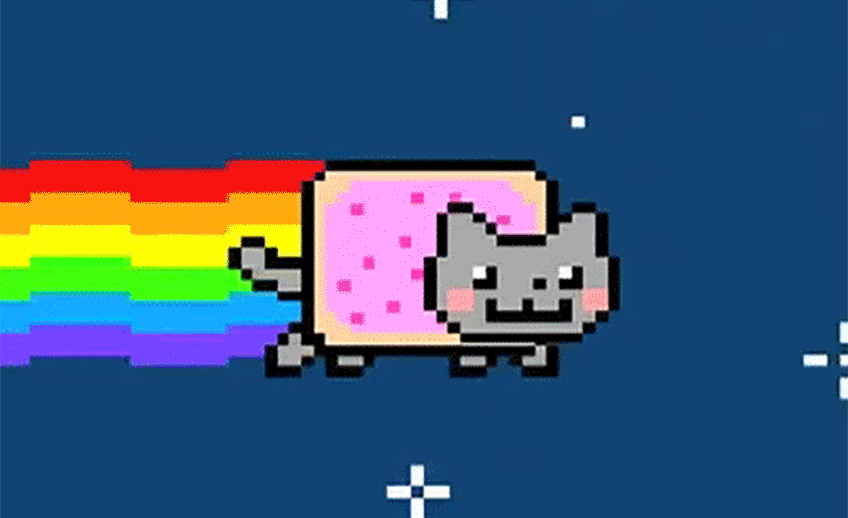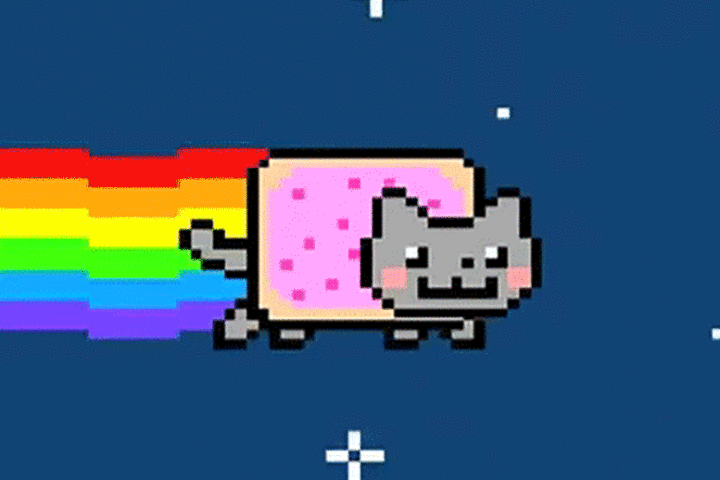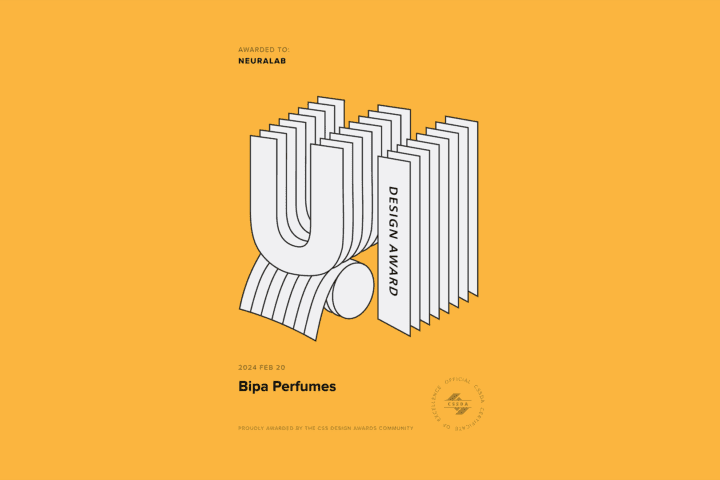Soap opera of GIF. The comprehensive story about Graphics Interchange Format which took over the Internet. PART 01 // HISTORY
Although GIF was created as a medium back in 1987, we just can’t shake the impression that it came to life in the past 5 years. During that period it became the primary medium of visual communication in the digital world. Even social media giants like Twitter and Facebook integrated this format in their feeds where it’s already side by side with emojis and stickers. In this first article of GIF trilogy we bring you the background and history use.

Today GIF come in various sizes, formats, styles and purposes and we can rightfully say that it’s the new go-to form of pop culture media. There are many platforms out there that allow users to browse existing GIF databases or to create and upload their own work. Giphy is currently the most popular one. Today they convey us to the mass bombing of animated content through various channels.
Most of them derive from known movies or TV series and interpret their storyline through a couple of frames in a humorous way. Subsequently, they are no longer part of a bigger picture but become a separate entity. Now they have a purpose to interpret emotional state or to joke on the content itself.
Having said that, we shouldn’t neglect the artistic side of the GIF and its hybrids. There is a whole subculture of GIF authors who mediate on existing content and create them as a stand-alone art installation.
The big question is why this 30-year-old video/image hybrid flourished as a medium only recently.
HISTORY
For all those uninformed let’s elaborate the origins of the humble GIF. GIF stands for Graphics Interchange Format, which is a bitmap image form (rasterized graphics consisting of a structured grid mainly rectangular/square format – pixels). The father of GIF is Steve Wilhite, who was in charge of the CompuServe engineering team. Back then GIF was a standard 8-bit format, and in the 1990’s it became the main picture format. The compressed format was ideal for performing image transfers across the slow modem connections of the time. The format also allowed for color, replacing the black-and-white run-length encoding format (RLE).
GIF supports 8 bits per pixel in every image. Thus, each variety of color has its tonal variation which produces the final 256 colors. This means that GIF supports animated pictures which can have a maximum of 256 colors for each individual frame. Sadly, this limitation makes complex animations twitchy and transitions less subtle. But, in the end, it does not derogate GIF’s popularity whatsoever.
The biggest advantage of GIF as opposed to video is compression. With video, if you scale down the resolution and size you lose dramatically on the display quality. GIF, on the other hand, uses lossless data compression called Lempel–Ziv–Welch. It reduces the file size but doesn’t taint the display quality.
In 1989 CompuServe published the 89a version of GIF which had animation delay ability. Another major benefit was the transparent background. These two aspects slowly but surely pushed GIF into mass use on the web.
Remember Netscape? This web browser giant of the past era published GIF 2.0 version in September 1995. GIF 2.0 supported the use of animation on the web as a display of simple animations. The ability to read data storage content and the fact that even partially downloaded content provided something recognizable was a major jolt to GIF’s popularity and general use.
The pivotal year for GIF was 1998. when Netscape decided to incorporate loopable GIFs inside of their browser. Some say that without this GIF would be devoured by jpeg and png format. Especially after its maker had a stroke in the mid-1990s and the company was acquired by AOL where the format became part of the public domain.
FIRST PUBLIC USE
The first known project for GIF use was an online newsletter called GIF news. It was distributed through BBSs (Bulletin board system) in 1988. until 1993. on a bimonthly basis.
After the launch of personal web hosting services and basic HTML platforms such as Geocities and Tripod, the use of GIF files in web design became omnipresent. But as a downside, it oversaturated the internet. Animated GIF banners with specific functions became very popular. One of the most prolific examples was the constant opening and closing of a mailbox while clicking on someone’s e-mail address, contact page, etc.

First major tipping point for GIF was 1990. When it became a part of classic animation with transparent background, thus it could be used in various graphics contexts.
Olia Lialina is a digital media artist from Russia. She is considered the pioneer in art experimenting with GIF medium. She started all the way back in 1997. One of her first projects was an online drama ‘Agatha Appears’ which was written in HTML 3.2 for Netscape. One of the main features of her project was the motion of the avatar over the internet. The illusion of movement continued even when users clicked on different links inside the story. The author herself stated that originally she had video as a format in mind, but in that era, GIF was the only way to move pictures inside web browsers.
One of her other early works is a monochromatic graphic story called “My boyfriend came back from the war”. It was a project where visitors had an option to choose the direction of unfolding story purely by interaction. Sadly this, and many other art projects of that time, got lost primarily because of technological advancement. They simply became obsolete to consume on modern browsers and devices.
The second major tipping point came in the year 2000 when Myspace was dominating the social networks realm. Who can forget its glitter effect and sparkling backgrounds? GIF was at home in such an environment. After Myspace, Tumblr became the stepfather of GIF and to this day is a go-to platform for the exchange and promotion of the format.
The second wave of GIF popularity swooped us in 2012. during the London Summer Olympics. The media used GIF as a lighting fast method to spread results and related news. In the same year GIF was chosen as the word of the year by Press Lexiograpes. They said it is “a tool with serious applications including research and journalism”. Social network giants, Facebook & Twitter, did not support GIF at that time, but couldn’t neglect the massive interest and usability, so they opened the door to GIF animation in 2015. They even incorporated it inside their chat apps as a default element which can, through pop culture and new media interpretation, convey the symbolic value of a person’s emotional state.
Today, even mobile technology tries to embrace GIF. Developers have to adjust their platforms in order to be able to reproduce the popular format. There are multiple apps that are trying to manipulate GIF and in the end, give users the tools to express themselves accordingly. Some of the tools are GIF Shop, Gifx, 5SecondsApp, Flixel, Gifboom, Cinemagram…
THE EVERLASTING PRONUNCIATION DEBATE
Even to this day the Internet community vigorously debates the subject of the proper pronunciation of the word GIF. The creator of the GIF graphics file format himself says it should be articulated as /ˈdʒɪf/ jif. His intention was to familiarize the general public to the format and bring it to everyday use. So he used a name similar to the popular peanut butter brand ‘Jif’. The majority of people pronounce it as /ˈɡɪf/ ghif and even in most lexicons, you will find both variations of the name. The severe polemics resurfaced in 2013 during Webby Awards, when Steve Wilhite received a lifetime achievement award. During his speech he referred to GIF as he originally envisioned – /ˈdʒɪf/ Jif. This shook the online community and triggered an avalanche of discussions and articles on the subject matter.








